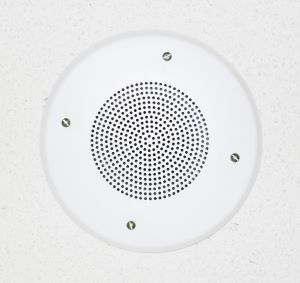
ARK System can help your school or business bypass common mass notification issues.
One of the goals of safety plans is to prepare people for the worst-case scenario. Unfortunately, the logistics of making this happen aren’t as simple. In other words, it’s “much easier said than done.” Without an optimized mass notification system, the planning process becomes even messier. School campuses, in particular, need such detailed contingencies because of current events and how often incidents such as on-campus violence or active shooter situations continue to occur. Above all else, sharing information is key.
Integration and Expertise “Silos”
One unfortunate byproduct of emergency system integration is the so-called “silo” effect. That side effect kicks in when multiple people are required to monitor risky situations and take action in response to them. Even as good as those specialists are, they’re still only human. Thus, simple human error can foul up proper responses to emergencies, such as lockdowns or evacuations. Disconnected technology also leads to the problem of confusing messaging and blurry context. However, mass notification systems unify management responsibilities and eliminate potential knowledge or authority silos.
Using the IoT to Full Effect
It’s fair to say that the Internet of Things (IoT) is a modern technological marvel. Once you have it enabled for your campus management systems, you shouldn’t hesitate to use it to its full potential. Thus, it becomes easier to lock and unlock such disparate devices as electronic locks, security cameras, and motion-activated lights. Activating a live camera feed based on certain triggering conditions (such as sound detection) also becomes easier by utilizing this technology. Automation removes some of the hassles from the process. And since it’s streamlined, your staff, faculty, and administrators can focus on protecting their students, resolving the situation, and reaching out to first responders and law enforcement as needed. Emails, text messaging, and virtual platforms such as Zoom, WebEx, and Microsoft Teams make a real difference; even simple conference calls can achieve the same goal unless time is literally of the essence.
Giving the “All Clear” and Return to Normal Stance
Using an MNS can also facilitate giving the “all clear” signal. Once this message has been delivered, the campus community can resume normal operations and move away from an emergency stance. Orders to scatter need to be undone so that gatherings can resume. This configuration helps sidestep the issue of messaging delays. And after-action reports can give administrators more insight into what went wrong and what went right. This means they can better prepare for future emergencies, even if it is only in drill or simulation formats.
TRUST THE PROFESSIONALS AT ARK SYSTEMS
Located in Columbia, Maryland, ARK Systems provides unsurpassed quality and excellence in the security industry, from system design to installation. We handle all aspects of security with local and remote locations. With over 30 years in the industry, ARK Systems is an experienced security contractor. Trust ARK to handle your most sensitive data storage, surveillance, and security solutions. Contact ARK Systems at 1-800-995-0189 or click here today. Check us out on Facebook and Twitter as well!
This entry was posted on Wednesday, December 8th, 2021 at 3:33 pm. Both comments and pings are currently closed.